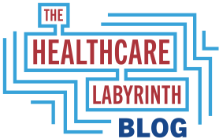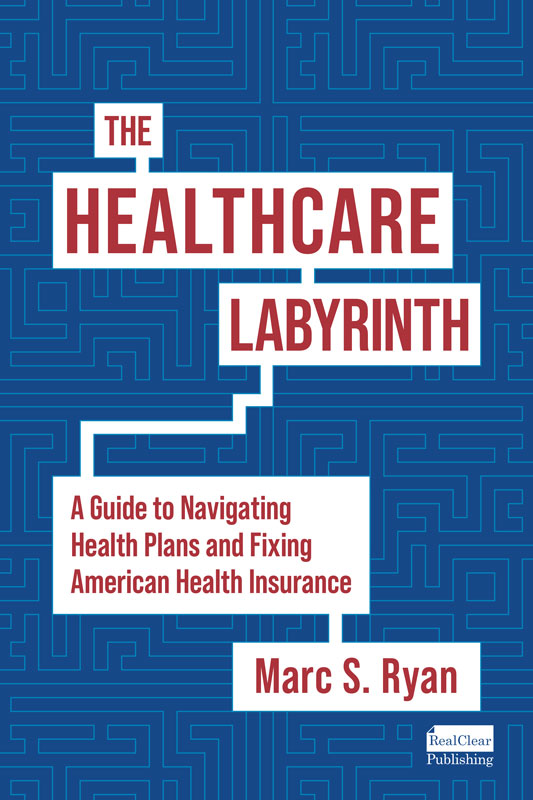This blog is part of a four-part series on Health Plan Economics. In this series, I plan on simply laying out some important trends in different lines of business and some of the impacts from a healthcare economics standpoint. Here is my plan, subject to change of course based on breaking news:
April 25 – Medicare Advantage and Rumors Of Humana’s acquisition by Cigna
April 29 – How The Lapse Of Premium Subsidies Could Hurt The Exchanges’ Relatively Stable Finances
May 2 – How Falling Medicaid Enrollment is Impacting Health Plans and Providers Alike
May 6 – Other Healthcare Trends And Their Economic Impacts On Plans
—
Part 3 – How Falling Medicaid Enrollment is Impacting Health Plans and Providers Alike
Now that we have covered Medicare Advantage and the Exchanges, let’s move this week to what is happening in Medicaid managed care. Note that I base many of my statistics and own calculations on the tremendous work of Kaiser Health News (KHN) and the Kaiser Family Foundation (KFF). See resources at the end of this blog.
The Medicaid landscape
Just like Medicare, Medicaid tends to have both a traditional fee-for-service (FFS) environment in each state as well as managed care. But while there is a rough 50-50 mix of the two systems in Medicare (between FFS and Medicare Advantage or MA), Medicaid tends to have a higher concentration of managed care. The Kaiser Family Foundation (KFF) finds that roughly three-quarters of all Medicaid recipients are in some form of comprehensive managed care. Forty-two states (including the District of Columbia) contract with private managed care plans for some or all of their Medicaid populations.
Why is this? While some states lag due to their rural nature, states concluded early on that the traditional systems were costly and were of poor quality. They turned to managed care companies to better quality but also to control costs. At first, most Medicaid recipients enrolled in managed care were mothers and children often associated with the Temporary Assistance for Needy Families (TANF) welfare program.
Over time, more populations were added to Medicaid managed care. It is also the case now that many states are placing their so-called Aged, Blind, and Disabled (ABD) and federal Supplemental Security Income (SSI) populations in managed care. Many of these are on their way to Medicare primary coverage and often are dual eligibles (both Medicare and Medicaid eligible), once they qualify. These populations tend to look a lot like Medicare ones.
And the latest development is that states are contracting with managed care to control costs for chronic long-term care as well. Many states ask a managed care entity to manage both medical (either primary or secondary) as well as long-term care needs all in one plan. As we discuss often here, nursing care is limited to rehabilitation and short stays in Medicare. Medicaid is the program for chronic long-term care.
Payments to Medicaid managed care represent about 52% of expenditures for Medicaid. Despite having 74% of enrollees, this is so because much of the long-term care expenditures are still in FFS programs and some of the most ill beneficiaries remain in FFS as well. This contrasts with Medicare, where opponents of managed care argue MA plans receive well more than 50% of Medicare payments despite being just above 50% of enrollees. They also argue there is beneficial selection in MA as well. You know me, I think there are two sides to this story.
While not a topic of this blog, the Centers for Medicare and Medicaid Services (CMS) are seeking to tightly integrate the Medicare and Medicaid plans so that dual eligibles are managed in one plan for all their Medicare and Medicaid acute care and long-term care needs.
One other note, most states carve pharmacy into managed care plans, but under new rules the expenditures are bundled with all Medicaid drug spending and on the brand side are collectively eligible for a mandatory federal rebate as well as supplemental state rebates.
Medicaid managed care profile
KFF notes that there are 287 Medicaid managed care entities delivering services throughout the United State (as of 7/1/2021). These are a mix of private for-profit and private non-profit entities as well as government plans. Large national managed care plans have many Medicaid managed care plans in individual states. As such, KFF finds that five publicly-traded national companies account for about 50% of all managed care enrollment. The firms are: Centene, UnitedHealth Group, Elevance Health, Molina, and Aetna (owned by CVS).
What happened during the COVID pandemic to drive Medicaid enrollment and then after when regular enrollment rules returned?
When the COVID pandemic set in, Congress passed a temporary measure that allowed recipients who qualified for the program or were already enrolled to remain on the Medicaid rolls until the pandemic emergency declaration ended. In essence, this suspended the redetermination of eligibility process in the program. As such, Medicaid enrollment surged. At its peak in April 2023, Medicaid and the related children’s health insurance program (CHIP) enrolled 94.5 million, 23.1 million during the COVID period. As of April 2023, redeterminations began again. Medicaid and CHIP shed 10.1 million members through January 2024. While most redeterminations have been processed, the number likely will fall more. But it is important to remember that the 10.1 million number includes losses and gains. The displacement of people was actually much greater. Somewhere over twice that number (over 20 million) of enrollees lost eligibility permanently or for a period of time. This impacted plan revenue as well.
Almost all managed care entities have lost lives since April 2023. KHN and KFF found that Medicaid enrollment of the five big national companies had collective enrollment declines of about 10% from the end of March 2023 through the end of December 2023, from 44.2 million people to 39.9 million. For example, Centene reported that its Medicaid enrollment fell 18.5% (to 13.3 million) from Q1 2023 to Q1 2024. UnitedHealthcare’s Medicaid enrollment fell 700,000 (to 7.7 million) from March 2023 to March 2024.
The publicly traded companies did a good job of setting expectations with investors. Largely, they had conservative calculations for losses and hyped the potential growth of Exchange rolls if they offered that product too. As the losses continued, the big plans were able to report that they were doing better on the enrollment front or meeting expectations against their disclosed estimates.
Many of the big plans continued to report year-over-year Medicaid revenue growth – how is that possible?
Notwithstanding all this, some of the big plans reported good revenues from the program and in some cases year-over-year growth, recently. KHN and KFF reported that UnitedHealthcare, Centene, and Molina had Medicaid revenue increases ranging from 3% to 18% in 2023. For example, in Q1 2024, United’s Medicaid revenue went to $20.5 billion, from $18.8 billion in Q1 2023. Molina’s Medicaid revenue was almost $7.5 billion in Q1 2024, up from $6.3 billion in Q1 2023.
How is that possible? Frankly because Medicaid managed care plans lobbied hard and made a good case to their Medicaid agencies that they merited interim increases during the displacement period as well as healthier annual increases generally. With states very beholden to managed care to both control costs and run the program, states listen. In my days as a state budget director, I regularly met with the health plan association given the service they carried.
The plans used this playbook:
- States do pay Medicaid managed care plans skimpily. Target margins are well below other health plan lines of business. I usually see margins targeted at about 2% and in tough times that number is less. In good years, MA and commercial lines (minus the Exchanges) can achieve at least double these percentages. And in most cases, this is on greater per-member-per-month (PMPM) revenue. The low rates are driven by very low provider rates in Medicaid, except to some degree in primary care as well as with hospitals, which have created unaccountable programs at the state level that tend to reimburse them well.
- While advocates may disagree, Medicaid managed care plans have usually done a good job of improving care and delivering for members even with great risk, low revenue, and low percentage margins. One way plans do this is by using the power of their Medicare and commercial networks to augment Medicaid ones. While advocates argue there are network and other issues in Medicaid, the access and quality situation would be far worse without managed care.
- During COVID, the federal government upped its reimbursement percentage in return for keeping Americans enrolled through the pandemic. In effect, states were rather flush with money. For each member enrolled in Medicaid and CHIP, states could charge the feds their normal matching rate and the temporary kicker. While the feds pay a majority of Medicaid costs around the nation, this added kicker pushed the net cost to the feds up and to states down. It is true that states had to pay a share of each additional member, but it also received a big tranche of other federal assistance.
- Plans also successfully argued that the lost membership was creating adverse selection. What do I mean? The plans speculated that healthier individuals were disproportionately leaving and the enrolled cohort that was left was sicker. I say speculated because in some cases there may not have been a lot of data. But I do not doubt the hypothesis. When Medicaid was first expanded, we saw adversity because sicker people who were uninsured sought out the expanded coverage. As time went on, that phenomenon settled. And as rolls grew during COVID, the law of large numbers would have generally reduced risk. So when you take a huge number of enrollees away, the opposite could be true or is likely true. As well, many who lost coverage were not categorically eligible (in SSI, TANF, etc.). These categorical populations tend to have sicker profiles.
In summary, the good relationship many plans have with state regulators, the relative free cash during COVID, and the successful lobbying effort by plans on the increased adverse selection led many states to fill in the void with more revenue. This greater PMPM revenue helped offset the revenue from lost enrollment.
But what is in store moving forward for plans?
Things will get far more uncertain for Medicaid managed care. Extraordinary federal dollars go away. The COVID Medicaid reimbursement goes away as well. The positive shift in Medicaid’s share of costs away from states reverses. The shift now is back to states. This cost shift creates huge challenges for plans and state Medicaid agencies, as does a return to moderately aggressive inflation and utilization.
But I don’t see plans abandoning Medicaid because of it. Again, enrollment is still high, plans have created a rather efficient engine, and government program companies like Medicaid for a number of reasons. Medicare and Medicaid are run similarly. Overall administrative costs get to be spread more. And the federal government is pushing for greater integration of Medicare and Medicaid. Plans need to be in both businesses to meet the challenge.
A positive trend with overlap between Medicaid and Exchanges
Increasingly, government program companies also like the Exchanges as the program fits into the government-program framework. This is in part due to the Biden’s administration’s vigorous endorsement and support. The Robert Wood Johnson Foundation notes that the overlap between the Exchange Marketplace and Medicaid has continued to increase. In 2024, about 75% of counties have at least one managed care entity offering both Marketplace Exchange and Medicaid plans. The biggest Medicaid plans have the highest overlap footprint and it is increasing each year. Centene, the biggest Medicaid and Exchange provider, has an overlap of 65% of the more than 2,100 counties it is in. Elevance Health has an overlap of 40% of the almost 1,700 counties it is in. United has moved its overlap from 25% to 35%.
This is very exciting. It meets a national goal of ensuring people have choices and continuity of coverage as they move from one government program to another.
And how are providers being impacted?
Perhaps the biggest impact of Medicaid disenrollments will be on providers. During the COVID years, providers were able to rely on the fact that individuals were insured and various government programs could be billed. It was a steady flow of dollars and a known revenue source. Now, providers will need to turn to state safety net funding and grants to serve these once insured populations. Many of the safety net programs are at much lower levels today.
Fitch Ratings says that non-profit hospitals will see revenue impacts, with safety net hospitals seeing the most impact. In addition, hospitals will need to resort to hiring administrative staff to see if the now uninsured qualify for coverage again.
A new study reports on the major impact to patients at Community Health Centers (CHC). These centers usually serve social-determinant-impacted individuals and are reporting disproportionate impacts in terms of disenrollment, with concomitant impacts on access to care and interruption of care. While CHCs won increased funding in the 2024 budget compromise, the loss of significant Medicaid revenue impacts their ability to deliver care and provide for the needs of the uninsured. Remaining independent practices in underserved areas will also be impacted.
Conclusion
Medicaid managed care plans are rather savvy. They have found ways to serve the population with fairly low reimbursement. While their fulfilled pleas for more reimbursement during the redetermination process is not without risk, it is less risky than what many MA plans with the same corporate owners did by augmenting benefits tremendously upon receiving false Star increases and huge rate hikes prior to 2024. The state rate environment will tighten with less free money and a shift of costs back to states. Plans will need to push for holding the advances they made.
If President Biden is re-elected, the overall Medicaid policy will be one of expansion, which generally favors the plans in terms of financial generosity at the federal and state levels. If former President Trump wins, Medicaid policy will likely be under attack, which makes opportunities for more revenue less certain. But it is also true that monies will tend to be tighter under any president or Congress given the federal budget deficit and rules. Thus, overall expansion of populations and hefty rate increases are less likely moving forward.
Plans, too, have to ready for a whole range of new mandates aimed at greater accountability and pushing quality. KFF notes that the Medicaid managed care prior authorization (PA) denial rate is 12.5%, compared with 5.7% in MA. Expect Medicaid changes here that mimic what was done in MA.
State regulators also are getting far tougher on Medicaid plans because the feds are holding states more accountable. The move is a trend we see in every line of business. Plans will need to argue they need more dollars in rates in order to deliver.
Additional resources:
https://www.kff.org/medicaid/issue-brief/10-things-to-know-about-medicaid-managed-care/
https://kffhealthnews.org/news/article/medicaid-unwinding-insurer-revenue/
https://publichealth.gwu.edu/community-health-centers-report-impact-medicaid-unwinding-year-later
#medicaid #managedcare #exchanges #aca #obamacare #healthcare #coverage
— Marc S. Ryan





